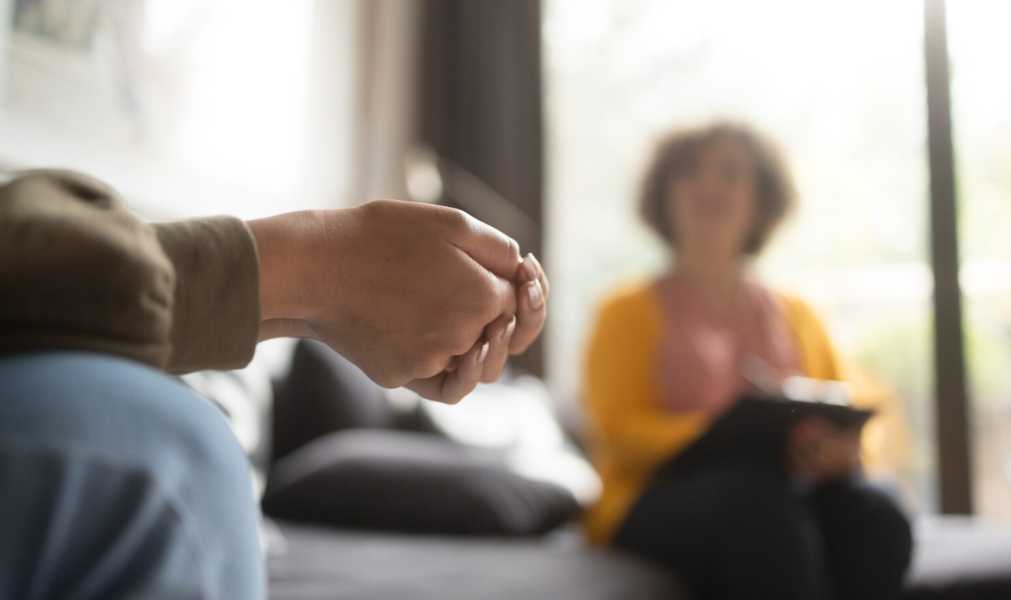The youth mental health crisis feeds itself.

Credit: Stock Rocket
Young adults are anxious, and Common Sense Media has fresh statistics to prove it. (Not that anyone who knows an adolescent or two needed to be convinced.) What is it about this young generation that has made their mental state like one permanently on the verge of a breakdown?
Undoubtedly, some of this is merely the plight of being a young adult in the modern world, a plight multiple generations have by now managed to survive. Yet there is also a stark decline since the last cohort escaped into adulthood: Among 18 to 26 year olds surveyed by Common Sense Media in 2003 and 2013, more than 50 percent said their mental health was excellent. In 2023, just 15 percent said the same.
In a cultural era which celebrates victimhood and the individual’s unique psychological experience of selfhood (“lived experience”), we should be concerned but not surprised to see the number of mentally ill soaring.
It is worth remarking on the fact that those suffering the worst decline in mental health are not teenagers. They are young adults, presumably in college and their early career years, who came of age with a plethora of preexisting anxieties which previous cohorts did not have, sank into mental illness remarkably quickly upon graduating high school, or learned in the last decade to judge their own mental health by entirely different rules than previous generations. Most likely, the participants in this survey represented a mix of all those things, but the one which seems to get the least daylight in media coverage is the last: Young adults calling themselves mentally ill are measuring their psychological well-being by a new standard.
This is largely due to the “awareness” campaign. In the last decade, every manner of public figure—musicians, actors, politicians, athletes, social media gurus—has campaigned to raise mental health awareness, an effort that conveniently dovetails with the institutional push for therapy access for younger children. Of course, it stands to reason that the more aware one is of potential mental disorders, the more likely one is to spot them in his own life. This is the explicit goal of mental health awareness raisers, but what is less explicit is whether more awareness leads to improved mental health, or indeed if it may have the opposite of the intended effect, as some studies have already indicated. Mental health awareness has increased substantially in the last decade. So too, we might note, has mental illness: Emergency room visits for self harm among 10-to-19-year-olds rose by 88 percent from 2001 to 2019. Suicide rose by 40 percent in the same cohort.
Medication is no small part of the awareness approach, but it also may be leading to an increase in mental illness. As one example of this, the Centers for Disease Control and Prevention currently recommends children ages 6 and up take ADHD medication in tandem with behavioral therapy, and estimates 10 percent of all American children aged 3 to 17 are diagnosed with this one mental disorder alone. Medications typically go in only one direction, as the side effects of the first drug are treated with several more drugs as a child becomes a young adult, a phenomenon brought to light yet again recently, this time by conservative journalist Ashley St. Clair. It seems, as St. Clair pointed out, that a large number of 20-year-olds today haven’t lived a day of their adult life without the help of one or another form of medicine. Ironically, one of the most common side effects of all these drugs is another monster of a mental ailment: depression.
We cannot ignore the effects of the internet in all of this. It is true, as one doctor at Georgetown University Hospital told the New York Times in response to the new data, that “a major driver of the mental health crisis is…the digitization of our lives, and social media in particular.” The well-documented, short history of internet social contagions demonstrates how cycles like this tend to work: Girls get tics from TikTok, gender dysphoria from Instagram, and suicidal from Tumblr.
Subscribe Today Get daily emails in your inbox Email Address:
Yet if the internet and social media are at fault, it is for encouraging the toxic mentality of viewing all life through the lens of one’s individual experience. They are the medium through which harm is often propagated, but they are not the only medium propagating it: Joining them are doctors, academics, public health experts, pop culture, politicians, and even parents. Thus, it is not enough to simply blame an algorithm. We must look further into those who created the algorithms, even as we examine those pushing the philosophy of psychological selfhood, pushing talk therapy and drugs on children as young as 6 years old, and pushing for teachers and counselors to take the place of parents in directing children’s lives.
In a companion survey to the mental health one, Common Sense Media found that young adults aren’t the only ones struggling: “A majority said things were not going well for families,” described the Times.
This should not surprise us, either. Indeed, one of the most consistent indicators of poor mental health in young adults is family trouble: In terms of mental health as well as every other major metric, children born to their married, biological mother and father fare far above children in any other arrangement. The breakdown of the natural family is as much the root of mental health problems as it is the only viable long term solution. By whatever winding road we got here, we should not expect to be able to leave this mental health epidemic behind without fixing the family first.
Sourse: theamericanconservative.com






